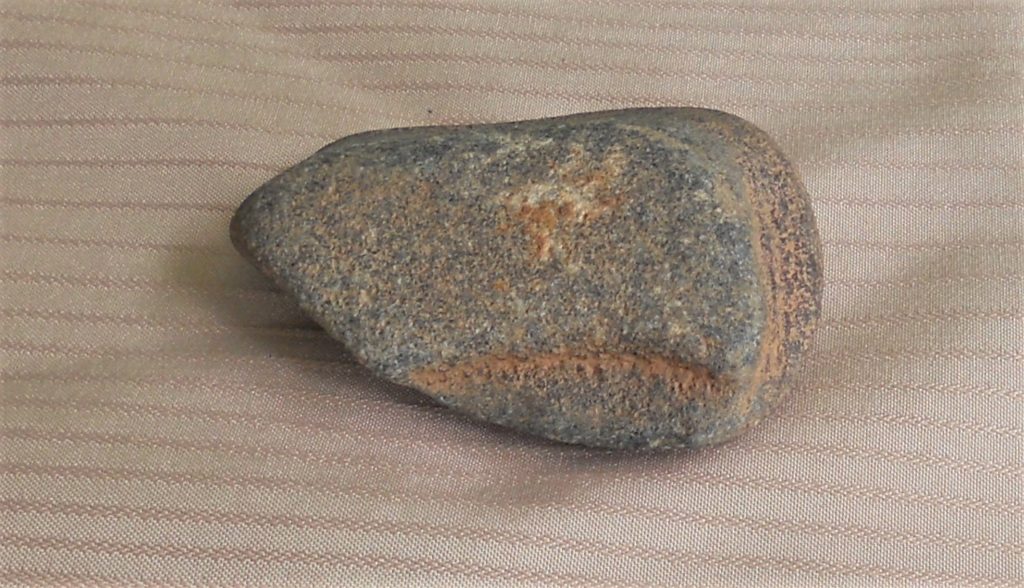STONE AGE QUARRY SCHOOL
For years, I would find what appeared to be miniature artifacts as I walked the dog. Although they were often constructed of materials which lacked the durability of other artifacts, they still appeared to be worked. I collected these because I felt that they must have been made for some purpose. After pondering the belief in “little people” which many tribal people have had throughout the world, I wondered if these could have been intended as gifts. After years, I learned that miniatures were made by the children of stone age people. So, over a period of years, I discovered a Stone Age quarry school.

From the artifacts which I have gathered, I believe that they began to learn their tool-making survival skills from a young age. It appears that they progressed to bigger artifacts as they grew older. This quarry school, from which I have found remnants, shows early humanity’s commitment to educating their youth in the ways of survival.
From a young age, the boys were given softer rocks to create toy versions of the adult tools. Although I liken these tools to toys, I believe that playing is helpful for children in their growth to adulthood. I am also considering the similarity of modern people giving toy tools to their young. Parents know that their children want to imitate them before it is safe for them to use a sharp tool or to cook on a fire. These early parents provided an outlet for their children’s desire to imitate the adults by allowing the boys to begin tool-making skills on a smaller, safer scale.
BOYS' SPEAR POINTS AND KNIVES

When the boys were learning to make the shapes of points, knives, or other sharp tools, they were using rocks which could not be flaked. Like the men, the boys thinned out their materials before they shaped these. They produced these blunt points from rocks which were rich in minerals to enhance their appearance. They made similar shaped tools as the men’s versions. The men probably started their boys out on these softer materials for the sake of safety. These tools would not have been sharp enough for actual use.
However, I have also found smaller versions of sharp, quartz tools which I believe were made by older boys. It may be that smaller sizes were encouraged to preserve resources until the boys mastered the flint-knapping techniques of the men. Yet, small points could have been made by men for the purpose of dart points for blowguns. But, small knives which were flaked could have been produced by boys who were older.
BURINS, SHAPED LIKE BIRDS AND HEAVY STONE TOOLS
The blunt projectile points were found with burins, knives, and serrated tools which were probably modeled after tools used for tanning hides and butchering meats. I have found three burins shaped like birds’ heads. Because they are made of softer rocks than quartz, I believe that these were also made by young boys. Another is a rare two-sided burin. It resembles a sitting bird with the beak and tail feathers composing the two points for the burin.
Many of the miniature heavy stone tools in the area were made from rocks which are similar in softness to slate. Since boys would not have had the strength of men, I believe that they were given these softer materials to begin producing ground tools from these softer rocks. Some of the smaller sized tools are made from harder materials, like the men’s tools. Again, it may be that these smaller versions were encouraged to preserve resources. It also could have been the appropriate size for a boy to begin learning how to use these tools.


The artifacts which have been dated by archaeologists are from Paleo to Early Archaic. There may have been quarrying in this area after those dates, as well. There was certainly a Native American presence in my area which lasted into the Historic Period. Because I have gathered artifacts from on top of the ground, there is no way to date many of them. Some surfaced due to erosion and some were deposited after a flooding event. Unless similar artifacts have been found in dated, archaeological dig sites elsewhere, finds from on top of the ground lack context.